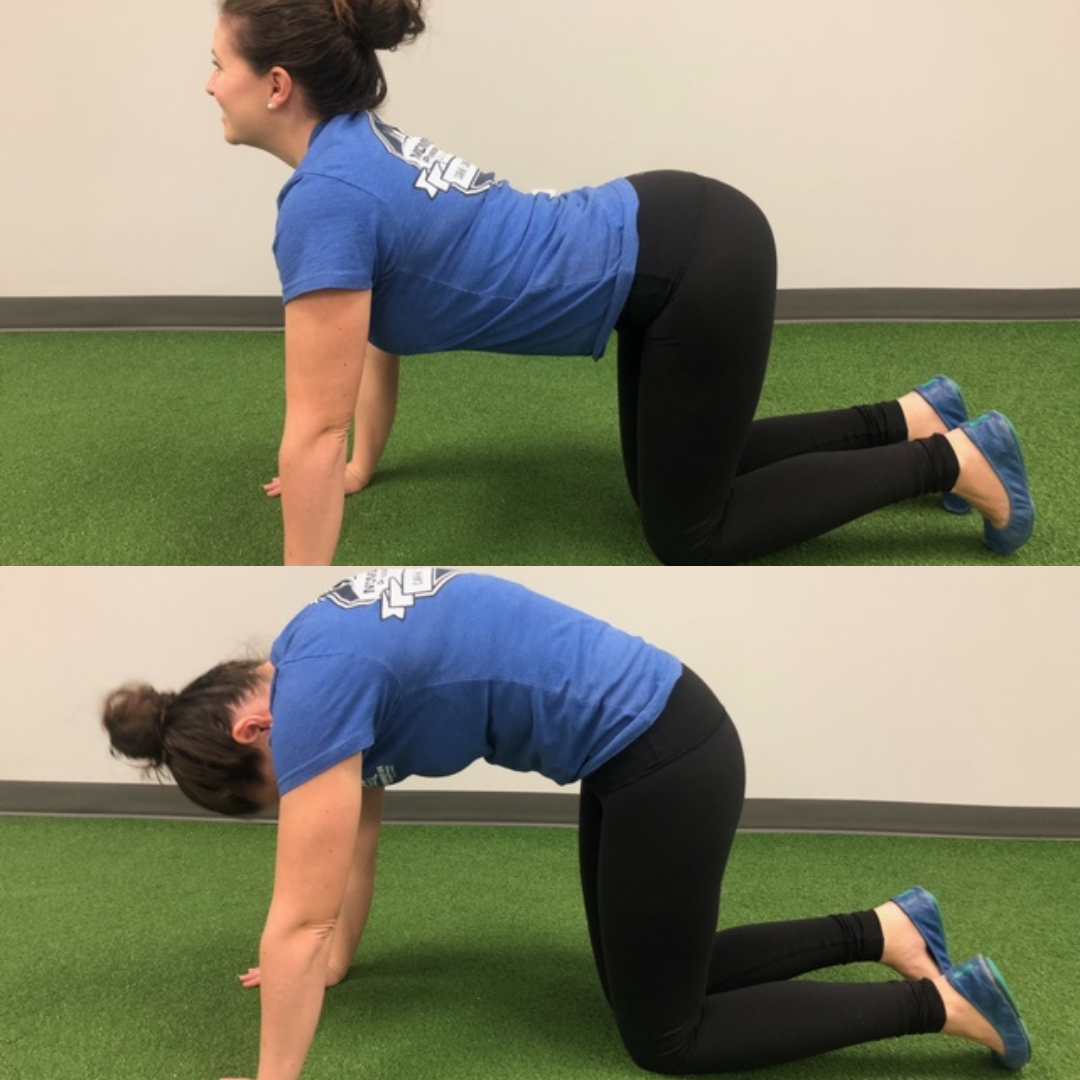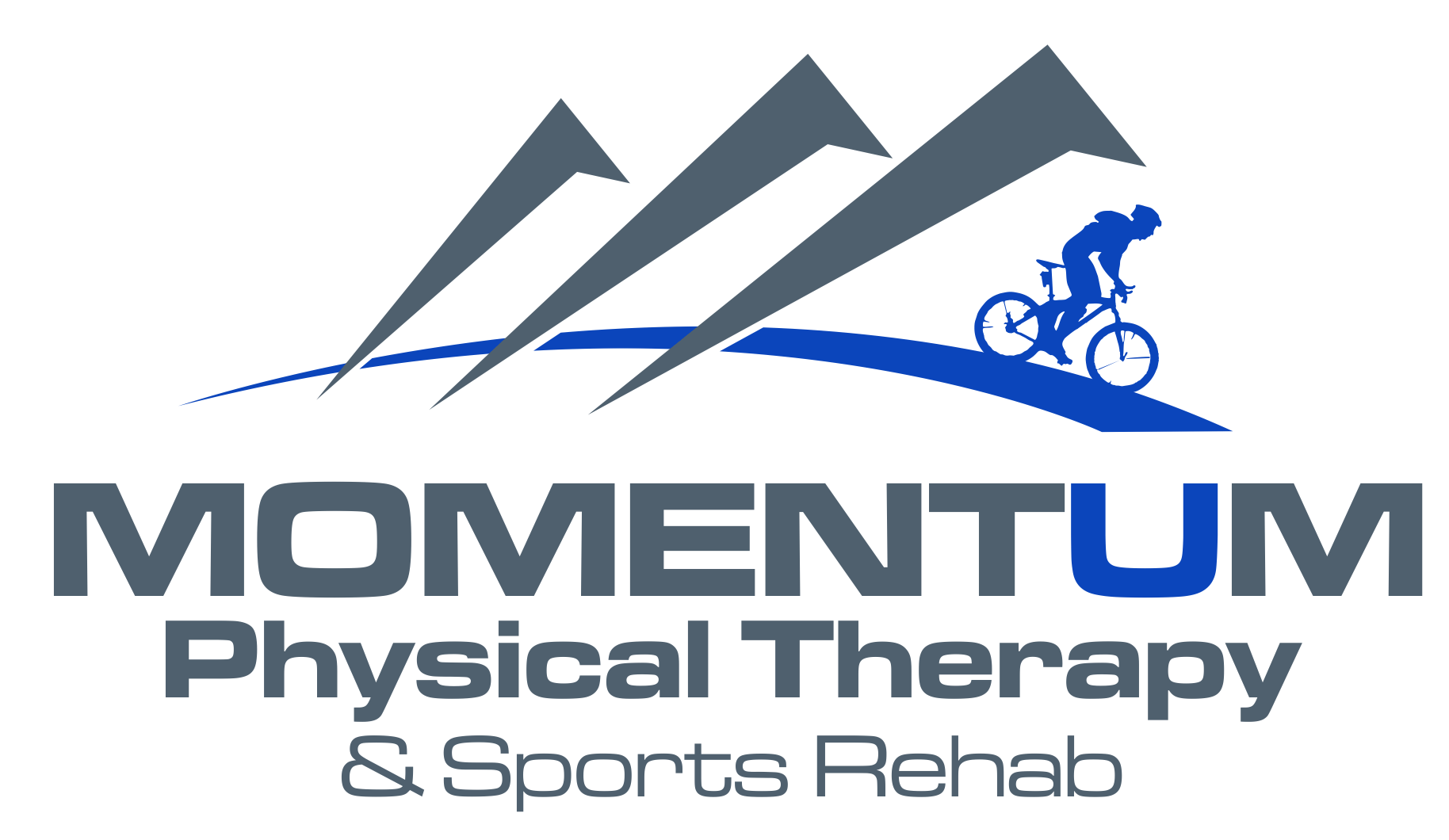The Top Three Physiotherapy Treatments to Reduce Neck Pain + Headaches
With spring on the way (hopefully!), many of us have spent the last few months hovering over our computers with work or school as we wait for winter to break. Unfortunately, all this time spent indoors at a desk has allowed neck pain to really settle in. As a result, we have started to see lots of clients who are seeking physiotherapy and massage therapy at our clinic in Okotoks, MOMENTUM Physical Therapy & Sports Rehab.
Can you relate? Do you suffer from neck pain and/or headaches? If you, or someone you know, can relate please keep reading!
Many people don’t realize the connection between posture and neck health. In this blog, we'll explore how poor posture can be a major contributor to neck pain and headaches and offer some tips on how to alleviate these issues by diving into WHY you are feeling sore after sitting at the desk and WHAT you can do to help get rid of that nasty and nagging neck and headache pain.
Before we jump in, let me introduce myself.
My name is Stephen Uhrbach and I am a physical therapist at MOMENTUM Physical Therapy in Okotoks, Alberta. I lead a team of talented physiotherapists and massage therapists at MOMENTUM Physical Therapy in Okotoks, Alberta. Everyday my talented team help treat people (like you!) with neck and headache pain.
The Anatomy of Neck Pain & Headaches
Neck Pain & Headaches Relationship:
To understand the relationship between poor posture, neck pain, and headaches, let's begin with an anatomy lesson. The human neck is incredibly intricate, comprising seven small bones (vertebrae) that support the weight of your head (which weighs around 10-12 pounds on average). When you maintain proper posture, these vertebrae are aligned correctly and the surrounding muscles and ligaments can do their job efficiently.
The Domino Effect:
Poor posture, such as slouching at the computer or while looking at your phone, disrupts this balance. When you slouch or strain your neck forward while working on a computer or desk, you will be adding stress and pressure to bones, muscles, nerves, and ligaments in the neck. Poor posture will force all of these elements to work harder then they are designed to - which can generate neck pain and headaches by increasing:
1. Muscle strains:
The muscles in your neck have to work harder to support the weight of your head when it's out of alignment. Over time, this constant strain can cause muscle fatigue, tightness, and discomfort.
2. Nerve compression:
Poor posture can also compress nerves in your neck, leading to a condition known as "radiculopathy." This can result in radiating pain down the arms and into the shoulders.
3. Reduced Blood Flow:
Slouching can restrict blood flow to the head and neck, depriving these areas of oxygen and nutrients. This reduced circulation can contribute to tension headaches.
4. Increased Stress on joints:
Poor alignment of the vertebrae can also accelerate the wear and tear on your neck's joints, potentially leading to chronic conditions like osteoarthritis.
The Vicious Cycle of Pain
The discomfort and pain caused by poor posture can create a vicious cycle. When your neck is tense and your head is pounding, you might find yourself adopting even worse postures in an attempt to find relief. This, in turn, exacerbates the problem and can lead to more muscle tension and strain. This cycle will continue until you break it!
So, How Do You Break the Cycle?
Now that we've established the connection between poor posture and neck pain/headaches, it's time to discuss how you can break this painful cycle! Here are three suggestions on how to break this cycle!
1. Change Your Setup:
Making sure that you have the RIGHT setup at your home or office desk is paramount to your success. Consider this a quick checklist for how to set up your office desk so you are less likely to put your neck into a compromised and strained position. Check yourself against the following list to see if you are set up optimally at your desk!
Get A Solid Chair:
The first step to achieving good desk posture is having the right chair. Look for a chair that provides support to your lower back (lumbar support) and is adjustable in height. Your feet should rest flat on the floor, or you can use a footrest to maintain proper leg alignment.
Feet Flat, Thighs Parallel:
Ensure your desk and chair work together seamlessly. When you sit down, your thighs should be parallel to the floor, and your feet should be flat or resting on the floor or a footrest. This alignment will help prevent strain on your lower back and legs.
Computer Monitor at Eye Level:
Position your computer monitor or screen at eye level. You shouldn't have to look down or up at the screen; it should be directly in front of you. This setup keeps your neck in a neutral position, reducing strain and discomfort.
Elbows Resting at 90 Degrees, Wrists Relaxed:
Your keyboard and mouse should be within easy reach, with your elbows close to your body and bent at a 90-degree angle. Your wrists should be in a neutral, flat position while typing. Avoid resting your wrists on the edge of the desk, as this can lead to wrist pain over time.
Sit Back and Relax:
Sit all the way back in your chair so that your back is supported by the chair's backrest. Maintain the natural curve of your lower back by utilizing the lumbar support feature. This helps to distribute the weight evenly and reduces the risk of lower back pain.
Shoulders Down, Not Up:
Keep your shoulders relaxed and down, not hunched up towards your ears. Avoid shrugging, as this can lead to tension in your neck and shoulders.
Schedule Breaks and Movement:
Even with perfect posture, it's important to take regular breaks. Stand up, stretch, and walk around for a few minutes every hour. This not only reduces the risk of muscle stiffness but also boosts productivity and concentration.
2. Three Exercises To Help Reduce Neck Pain and Headaches
After ensuring that your work environment is set up optimally, it is time to start dealing with some of the effects of our prior poor posture.
Below you will find a quick resource guide that you can use to reduce your neck pain and headaches today! Give these a try to see how they help reduce your stiffness and soreness.
Physio Exercise #1 - NECK MUSCLE KNOT RELEASE
Whenever you sit with poor posture, your body can go into a self protection mode. Your body will tighten muscles around the neck help protect it - thus developing neck muscle knots. This tightening of muscles will create stiffness, neck pain, and headaches.
In order to reduce your neck pain and headaches, you need to loosen these tightened neck muscles. We do this simply by using a lacrosse ball and rolling out the tightened muscles on the the back of the neck.
Equipment Needed: A lacrosse ball (or hard rubber ball) and a pillowcase
Step 1: Grab a lacrosse ball and place it in a pillow case.
Step 2: Find a solid wall (we do not recommend doing this on your feature wall in your living room incase you leave a dent in the wall!)
Step 3: Throw the pillowcase (with the ball in the bottom of it) over the back part of the neck and lean against the solid wall.
Step 4: Roll the ball around on the back until you find a sore spot (stay off the hard bony spine in the centre of the neck). Press into this sore spot so that it is tolerable but uncomfortable. Hold for 20-30 seconds before locating a new sore spot. Complete this for 4-5 minutes.
Step 5: Remove the ball from the pillowcase. Find a door frame and place the ball between your upper shoulder and the doorframe. Press into any sore spots so that it is tolerable but uncomfortable. Hold for 20-30 seconds before locating a new sore spot. Complete this for 4-5 minutes.
Once completed, this exercise should have removed some of the tension in the neck. This is the first physio exercise to reducing the pain you feel in your neck.
Physio Exercise #2 - HOW TO STRETCH THE NECK
Seated for hours at a laptop or your smartphone can lead to slouching and tension in your upper back and neck. A physiotherapy exercise to help alleviate this is the neck muscle stretch. This exercise is most effective AFTER you have rolled out the tight spots in your neck with the Neck Muscle Knot Release exercise from above.
How to do this physio exercise:
Step 1: Turn your head and look at one of your shoulders.
Step 2: With the arm on the same side that you are looking, reach up and gently grab the back of your head.
Step 3: Gently pull on the back of your head until you feel a gentle pull on the opposite side of the neck.
Step 4: Hold for 20 seconds and relax.
Step 5: Repeat three times on both sides.
Physio Exercise #3: THE CAT COW
Once you have loosened the muscles of the neck, it is time to make sure that the bones and joints in the neck are moving smoothly. This next physiotherapy (and yoga!) exercise has been shown to loosen neck muscles and lubricate the joints in the spine. This is a go to for physiotherapists who are treating people with any form of back or neck pain.
How to do this physio exercise:
Step 1: From your hands and knees, start off by letting your stomach sink towards the ground while you look up towards the roof. This is the cow position.
Step 2: Go as far as you comfortably can and hold the end position for a count of 1.
Step 3: Arch your back up towards the roof while bending your neck down and looking towards your belly button. This is the cat position.
Step 4: Go as far as you comfortably can and hold the end position for a count of 1.
Step 5: Repeat this 15 times.
Together, these three exercises are great ways to loosen tight neck knots, stretch shortened neck muscles, and lubricate the joints of the neck and spine. They are great exercises to help stave off or reduce neck pain and headaches.
3. GET HELP FROM A PHYSIOTHERAPIST
Dealing with chronic neck pain or frequent headaches can be incredibly frustrating and disruptive to your daily life. If changing your work setup and trying the simple exercises above don’t seem to cut it, before you reach for another painkiller, consider trying physiotherapy.
Assessment and Customized Treatment
The first step in a physiotherapy journey is a comprehensive assessment. A trained MOMENTUM physiotherapist will examine your posture, neck range of motion, and muscle strength. They'll also discuss your medical history and lifestyle factors. This information helps create a tailored treatment plan that's unique to you.
Your physiotherapist will create a customized treatment plant that will include:
Hands On Physical Therapy: Physiotherapists use hands-on techniques to alleviate neck pain. These may include:
Joint Mobilization: Gentle movements to improve the mobility of your neck joints.
Soft Tissue Release: Techniques to relax tense muscles and reduce trigger points.
Intramuscular Stimulation (IMS): Using small acupuncture needles to loosen shortened and tightened muscles.
Neck Exercises:
One of the key components of physiotherapy for neck pain and headaches is targeted exercises. Your physiotherapist will guide you through exercises designed to:
Strengthen Neck Muscles: Strengthening these muscles helps support the weight of your head and maintain proper alignment.
Improve Range of Motion: Specific exercises can enhance the flexibility and mobility of your neck, reducing stiffness and discomfort.
Posture Correction: Physiotherapists can teach you techniques to maintain better posture, reducing strain on your neck and head.
Pain Management
Physiotherapy may also incorporate pain management strategies, such as heat or ice, electrical stimulation, cupping, or kinesiotaping to help alleviate pain and inflammation.
Education
A crucial aspect of physiotherapy is education. Your physiotherapist can provide guidance on ergonomics at work or home, helping you create an environment that supports good posture and reduces strain.
Preventive Strategies
Once your neck pain and headaches are under control, physiotherapy doesn't stop there. It equips you with tools and knowledge to prevent future issues. You'll learn how to maintain a healthy lifestyle, including exercises and habits that keep your neck and head pain-free.
Ultimately, physiotherapy is a natural approach to reducing your neck pain and headaches. Instead of relying on medications that may have side effects, physiotherapy aims to heal your body from within, addressing the underlying causes of pain.
So, what’s next?
If you’re looking to get back to feeling your best, consider trying physiotherapy!
If neck pain and headaches are interfering with your quality of life, its time to come in and visit us at MOMENTUM Physical Therapy in Okotoks. With a personalized approach that targets the root causes of your discomfort, physiotherapy can provide lasting relief, improve your overall well-being, and help you regain control over your life.
At MOMENTUM Physical Therapy, in Okotoks, we treat all kinds of pain. Our talented team of physical therapists and massage therapists have helped thousands of people with a wide range of pain and injuries. Reach out to us today at 403-982-5600 or online to book your appointment today!
So, here's your call to action: connect with a MOMENTUM physiotherapist today to get those hips feeling better! You'll be on the path to recovery in no time. Book online here!
Our award-winning team here at MOMENTUM Physical Therapy- in Okotoks, is ready to help! Give us a call today at 403-982-5600 to get booked in with one of our awesome physiotherapists, massage therapists, or trainers. Or feel free to book online HERE!
We’re here for you!
Frequently Asked Questions
Can physiotherapy help with neck pain?
Yes! Physiotherapy is an effective tool to help reduce your neck pain and improve your posture to prevent future episodes of neck pain.
Can physiotherapy help with headaches?
Yes! Physiotherapy is a powerful tool to treat and eliminate headaches. Your physiotherapist will help you learn what is causing your headaches and provide strategies on how to reduce and resolve your head pain.
How does physiotherapy help reduce neck pain and headaches?
Physiotherapists reduce neck pain and headaches by developing customized treatment plans that include hands on therapy and exercises to help people reduce neck pain, improve neck movement, and improve overall posture.
Meet our Registered physiotherapists:
Meet our Kinesiologists:
Momentum Physical Therapy, located in Okotoks, Alberta, is ‘Here for YOU’.
If you are experiencing neck pain, have recurring headaches, or you just want to learn more about how massage therapy and physiotherapy can help heal your pain, don’t delay and call MOMENTUM Physical Therapy today. You can reach registered physiotherapists and massage therapists at MOMENTUM, located in Okotoks, by calling 403-982-5600. We look forward to helping you feel you best again.











